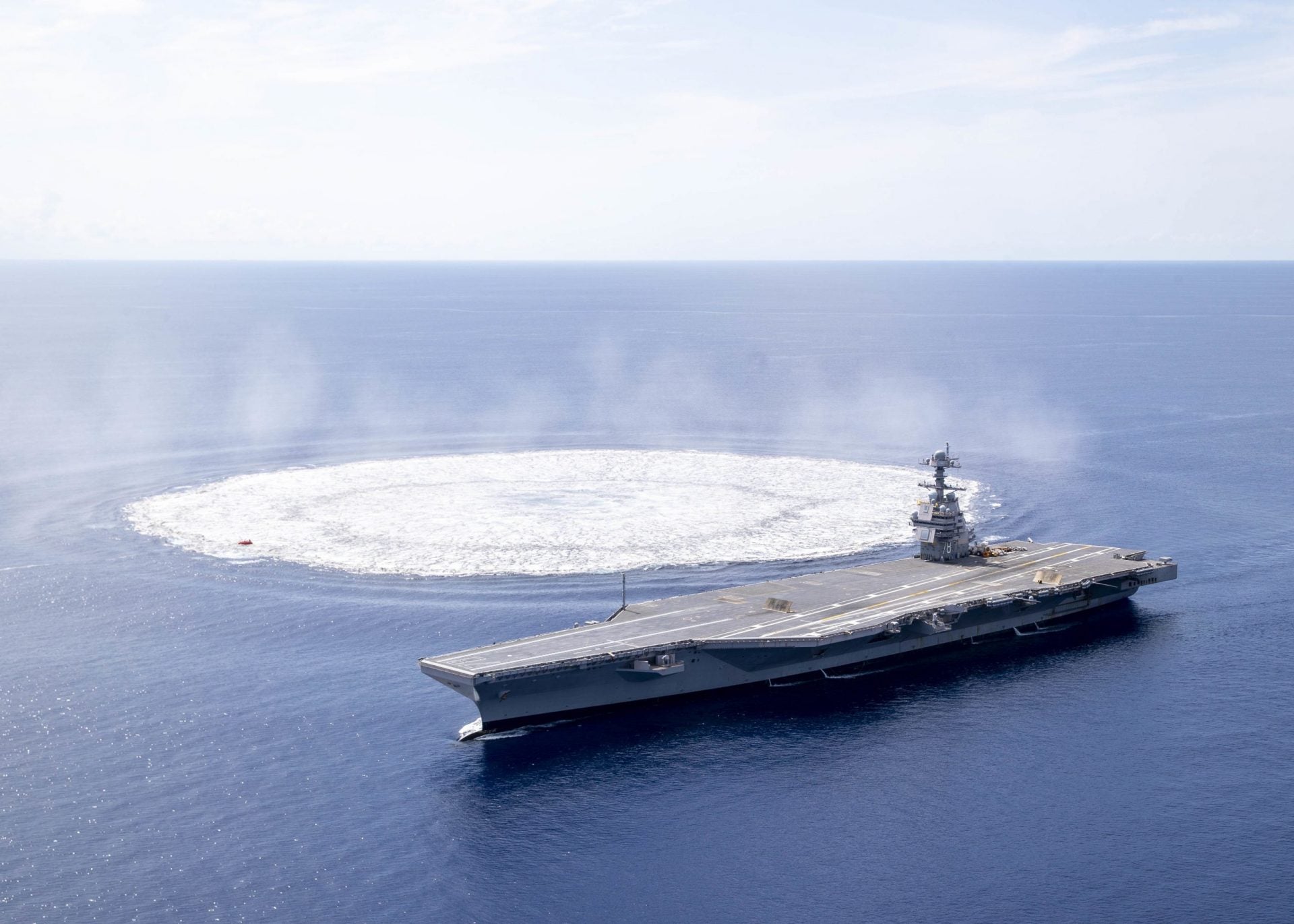
USS Gerald R Ford (CVN 78) has carried out the third and final explosive event off the coast of Jacksonville, Florida.
This event, completed last week, marks the end of the first-in-class aircraft carrier’s Full Ship Shock Trials (FSST).

Discover B2B Marketing That Performs
Combine business intelligence and editorial excellence to reach engaged professionals across 36 leading media platforms.
FSST are conducted to authenticate a vessel’s shock hardness and ability to withstand operations in a simulated combat environment deploying live ordnance.
The four-month testing evolution had seen the ship endure the impact of three 40,000-pound underwater blasts that were released at distances progressively nearer to the vessel.
US Navy’s future aircraft carrier programme office PMS 378 manager Captain Brian Metcalf said: “The navy designed the Ford-class carrier using advanced computer modelling methods, testing, and analysis to ensure the ships are hardened to withstand harsh battle conditions.
“These shock trials have tested the resiliency of Ford and her crew and provided extensive data used in the process of validating the shock hardness of the ship.”

US Tariffs are shifting - will you react or anticipate?
Don’t let policy changes catch you off guard. Stay proactive with real-time data and expert analysis.
By GlobalDataThe aim of the tests is to ensure that the vessel’s integrated combat systems function as designed.
Metcalf added: “The tests demonstrated, and proved to the crew, fairly dramatically, that the ship will be able to withstand formidable shocks and continue to operate under extreme conditions.”
The aircraft carrier is coming back to the Tidewater area for a Planned Incremental Availability (PIA).
As the six-month PIA commences, teams will carry out extra detailed inspections, evaluate any damage endured during the shots, and continue with modernisation and maintenance works prior to workups for the deployment of the vessel next year.
Claimed to be complex evolutions, FSSTs are carried out during an exact operating schedule in line with environmental mitigation requirements.
For the shock trials, coordination was needed across several Navy/Naval Sea Systems Command (NAVSEA) organisations and experienced FSST teams.
The first two shots of the FSST sequence were conducted on 18 June and 16 July.
USS Gerald R Ford is claimed to be the most advanced aircraft carrier in the US Navy.
The vessel completed an 18-month Post Delivery Test & Trials (PDT&T) in April.
During the PDT&T, the crew finished all testing, and undertook planned improvements and maintenance before schedule.
The vessel also served as the only East Coast platform for carrying out carrier qualifications.
Since 1960s, the Gerald R. Ford-class marks the first major design investment in aircraft carriers.
CVN 78 is designed to support new technologies and a modern air wing needed to deter and combat adversaries in a sophisticated maritime environment.



